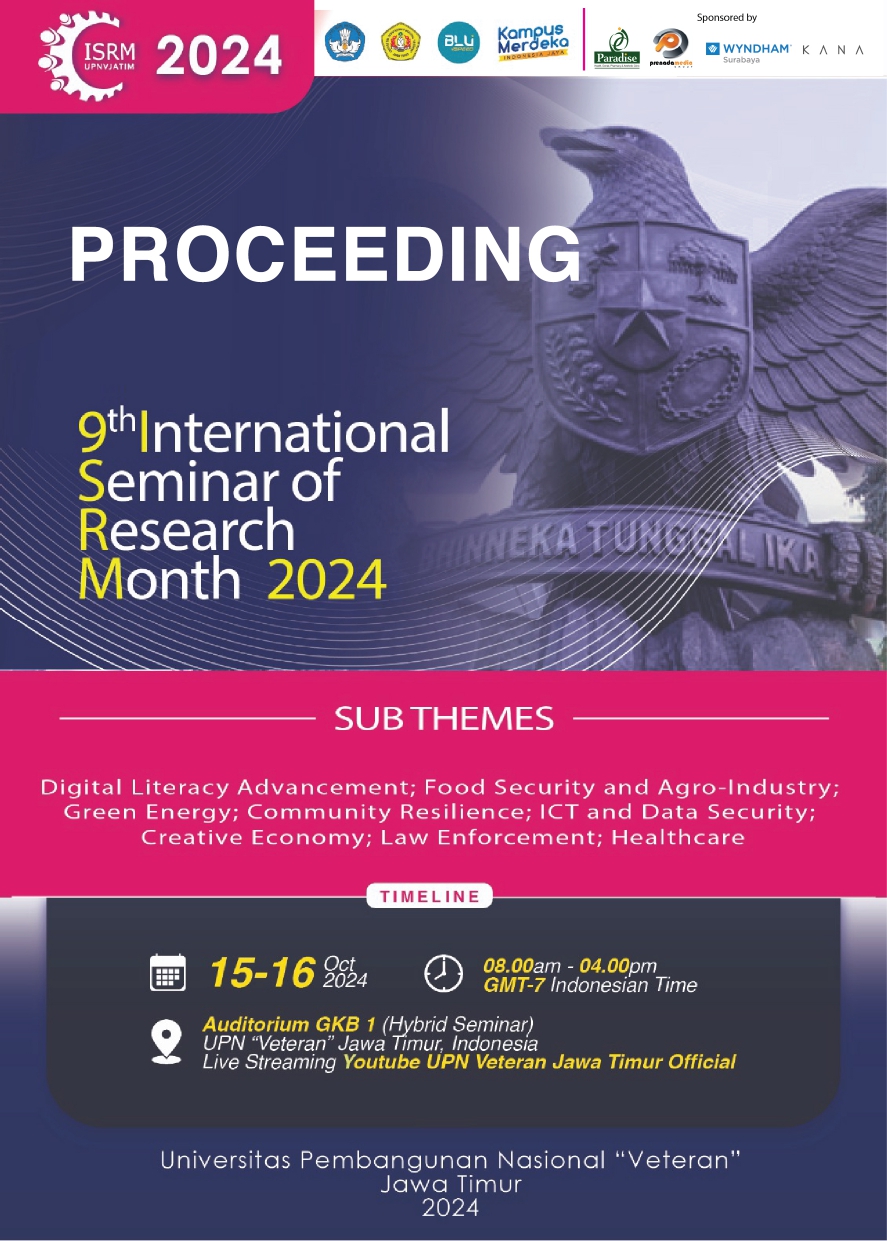Mapping of Existing Agro-Industrial Products in “Lumbung Stroberi” and Their Potential Linkages with the Tourism Sector
DOI:
https://doi.org/10.11594/nstp.2025.4711Keywords:
Agro-industry, agro-industrial products, agro-tourismAbstract
The potential for agro-industrial development in Indonesia is enormous, supported by an agricultural sector with diverse agricultural products. “Lumbung Stroberi” is one of the tourist villages that presents agro-tourism attractions with the main attraction being strawberry picking. agro-tourism in 'Lumbung Stroberi' has not developed optimally because the role of UMKM in the village has not been identified. Identification of agro-industry products is needed to add alternative agro-tourism attractions. The purpose of this research is the mapping of agro-industrial products in “Lumbung Stroberi” and the potential for development in the tourism sector (agritourism). The research method uses a qualitative description with a regional complex approach which is a type of regional identification based on the idea of uniformity. The results of the mapping of agro-industrial products reveal that in Pandanrejo Village there are objectives of agro-industrial product types. These products can be developed into agritourism attractions through the selection of raw materials, processing (process, results, and packaging), and marketing. In accordance with the objectives of agritourism which can increase knowledge, understanding, experience, and recreation tourists can feel when enjoying agritourism attractions in the production process of agro-industrial products. To realize the goal of agritourism, the main role is the way and storyline of the tour guide must be interesting. Agritourism attractions can be enjoyed through the production process of agro-industrial products. Starting from the selection and preparation of materials, the production process, marketing, to how to enjoy the product. Agro-industrial products in Pandanrejo Village can be enjoyed at Cafe Lumbung Stroberi which is located between residents' strawberry plantations so that the atmosphere is very pleasant to enjoy.
Downloads
References
Andrea, G. A. (2023). Inovasi kewirausahaan sosial dalam menangani produk agrowisata (Buah apel dan strawberi) melalui paket wisata agro di Kota Batu. Altasia Jurnal Pariwisata Indonesia, 5(2), 92-100.
Andrea, G. A., & Yudhiasta, S. (2022). Kewirausahaan sosial inovasi kewirausahaan sosial dalam menangani kesulitan distribusi produk agrowisata di Kota Batu. Jurnal Pariwisata Indonesia, 18(2), 1-12.
Amerta, I. M. S. (2019). Pengembangan pariwisata alternatif. Surabaya: Scopindo Media Pustaka.
Choirunnisa, I. C., & Karmilah, M. (2022). Strategi pengembangan pariwisata budaya. Jurnal Kajian Ruang, 2(1), 89-109.
Comedutec Network. 2024. Desa Wisata Pandanrejo. Diakses dari https://lumbungstroberi.com/, pada Okober 2024.
Kardi, I. S., Nasri, N., Ibrahim, I., & Nopiyanto, Y. E. (2020). Penerapan aktivitas fungsional rekreasi pada masa new normal untuk menjaga kesehatan lanjut usia. Jurnal EMPATI (Edukasi Masyarakat, Pengabdian Dan Bakti), 1(1), 62-70.
Karlina, A. (2019). Strategi pengembangan potensi wisata alam di Kabupaten Aceh Jaya. Skripsi. UIN AR-RANIRY, 1–66. Retrieved from https://repository.ar-raniry.ac.id/id/eprint/10165/.
Lumbung Strawberi. (2024). Produk unggulan. Diakses dari https://lumbungstroberi.com/, pada september 2024.
Mijiarto, J., Andrea, G. A., Gusriza, F., & Windiarti, K. R. (2023). Kesiapan pengembangan ekowisata berbasis masyarakat di Desa Wonorejo, Kabupaten Situbondo, Jawa Timur. Wanamukti: Jurnal Penelitian Kehutanan, 26(2), 95-106.
Nurdin, I., & Hartati, S. (2019). Metodologi penelitian sosial. Surabaya: Media Sahabat Cendekia.
Rahman, S. (2015). Analisis nilai tambah agroindustri chips jagung. Jurnal Aplikasi Teknologi Pangan, 4(3), 108.
Sahara, F. N. A., Iqbal, M., & Sanawiri, B. (2016). Analisis motivasi berkunjung wisatawan dan tingkat pengetahuan wisatawan tentang produk industri kreatif sektor kerajinan (Studi pada wisatawan domestik di Kota Batu, Jawa Timur). Jurnal Administrasi Bisnis (JAB), 35(2).
Sulastri, B. A. S. B. A. (2022). Pengaruh label halal terhadap pendapatan agroindustri obat tradisional dan tanaman rempah di Madura. Qawwam: The Leader's Writing, 3(2), 99-108.
Suwandi, A., Daulay, N., Imnur, R. H. I., Lubis, S. P. Z. L., Siregar, S. N. S., Pranata, S., & Wulandari, S. (2022). Peranan dan kendala pengembangan agroindustri di Indonesia. Jurnal Inovasi Penelitian, 2(10), 3185-3192.
Syafruddin, R. F., & Darwis, K. (2021). Ekonomi agroindustri. Penerbit NEM.
Yunus, H.S., (2021). Metodologi penelitian wilayah kontemporer. Edisi 3. Yogyakarta: Pustaka Pelajar.
Downloads
Published
Conference Proceedings Volume
Section
License
Copyright (c) 2025 Garsione Agni Andrea, Rachel Maryam Ramadhani, Dian Dewi Lestari, Rosalia Elmia, Kamelia Nurdiana S.P., Kintamara Meilanisa

This work is licensed under a Creative Commons Attribution 4.0 International License.
Authors who publish with this proceedings agree to the following terms:
Authors retain copyright and grant the Nusantara Science and Technology Proceedings right of first publication with the work simultaneously licensed under a Creative Commons Attribution License that allows others to share the work with an acknowledgement of the work's authorship and initial publication in this proceeding.
Authors are able to enter into separate, additional contractual arrangements for the non-exclusive distribution of the proceedings published version of the work (e.g., post it to an institutional repository or publish it in a book), with an acknowledgement of its initial publication in this proceeding.
Authors are permitted and encouraged to post their work online (e.g., in institutional repositories or on their website) prior to and during the submission process, as it can lead to productive exchanges, as well as earlier and greater citation of published work (See the Effect of Open Access).














